Between 1993 and 2000, Transfield, in consortium with Obayashi, developed and built the City Link ring roads in Melbourne, that city's first -and Transfield's most challenging- Build, Own, Operate and Transfer (BOOT) project.
Page Media:
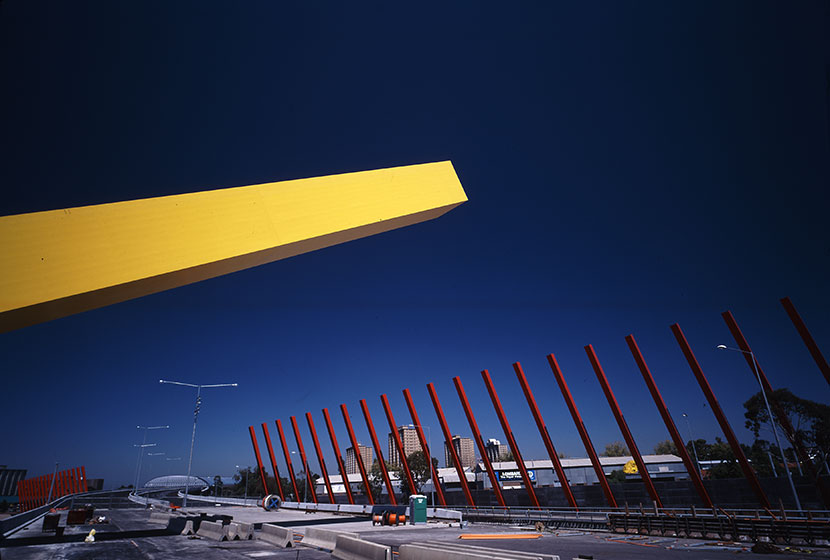
Between 1993 and 2000, Transfield, in consortium with Obayashi, developed and built the City Link ring roads in Melbourne, that city's first -and Transfield's most challenging- Build, Own, Operate and Transfer (BOOT) project.
Page Media:
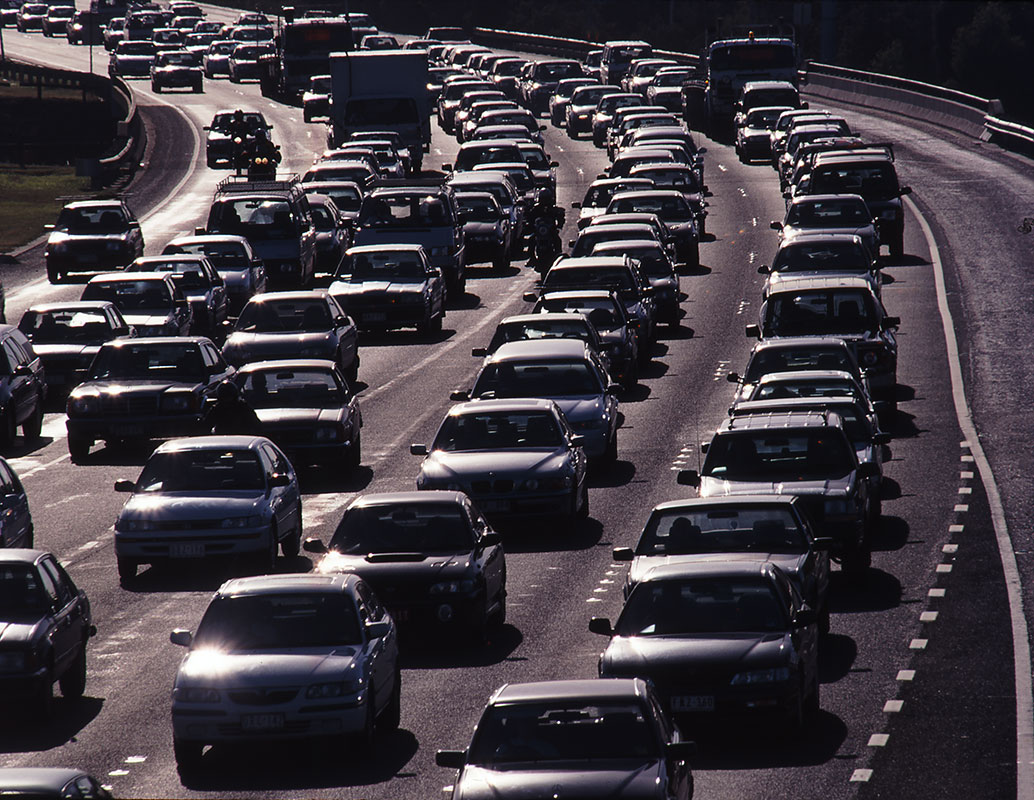
Melbourne had a number of well-planned arteries leading out of the centre, but a major cause of congestion was through-traffic in the Central Business District. In 1992, the Victorian Government called for tenders to develop the Melbourne City Link, as the answer to motorists' woes. Government expected the successful tenderer to design and build, finance and own, operate and, after 30 years, transfer back to Government the critical piece of infrastructure.
Page Media:
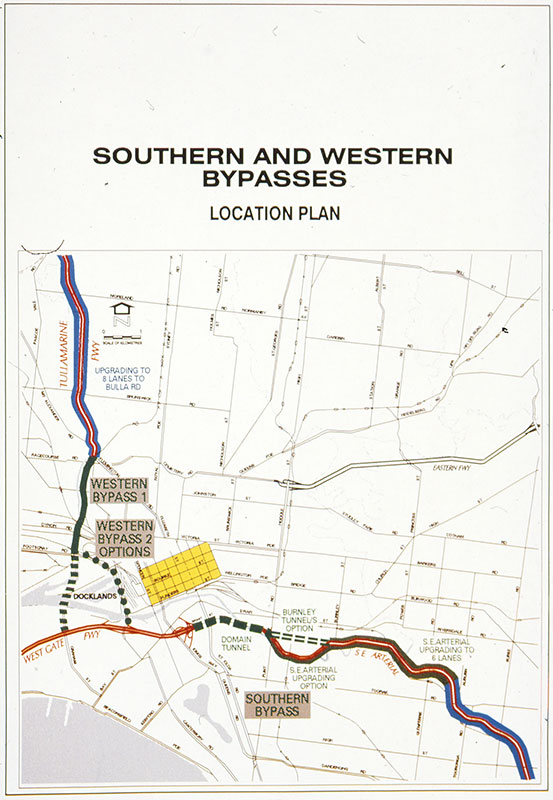
As with the Sydney Harbour Tunnel project, completed at the same time as tenders were called in Melbourne, Tony Shepherd played a key role in devising the bid plan. It was to be again, technically, a very challenging project, this time involving deep and long tunnels in poor ground conditions, rather than immersed tubes.
Page Media:
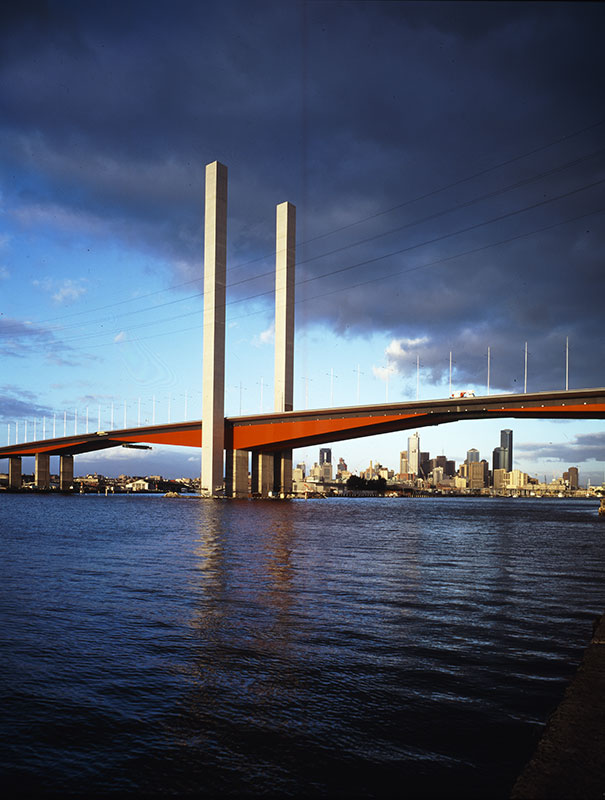
The Obayashi group from Japan, was identified as having the necessary resources, both in engineering and financial terms, to join with Transfield. When the bid was lodged, some 2 years later in January 1995, both companies were required to commit to $20 million each in equity, as project sponsors, for the future listed company, Transurban Limited. The twenty-volume bid, (which itself cost $20 million to prepare), had been printed in-house, to avoid potential leaks, and had been delivered to the client in a truck, escorted by two security guards.
Page Media:
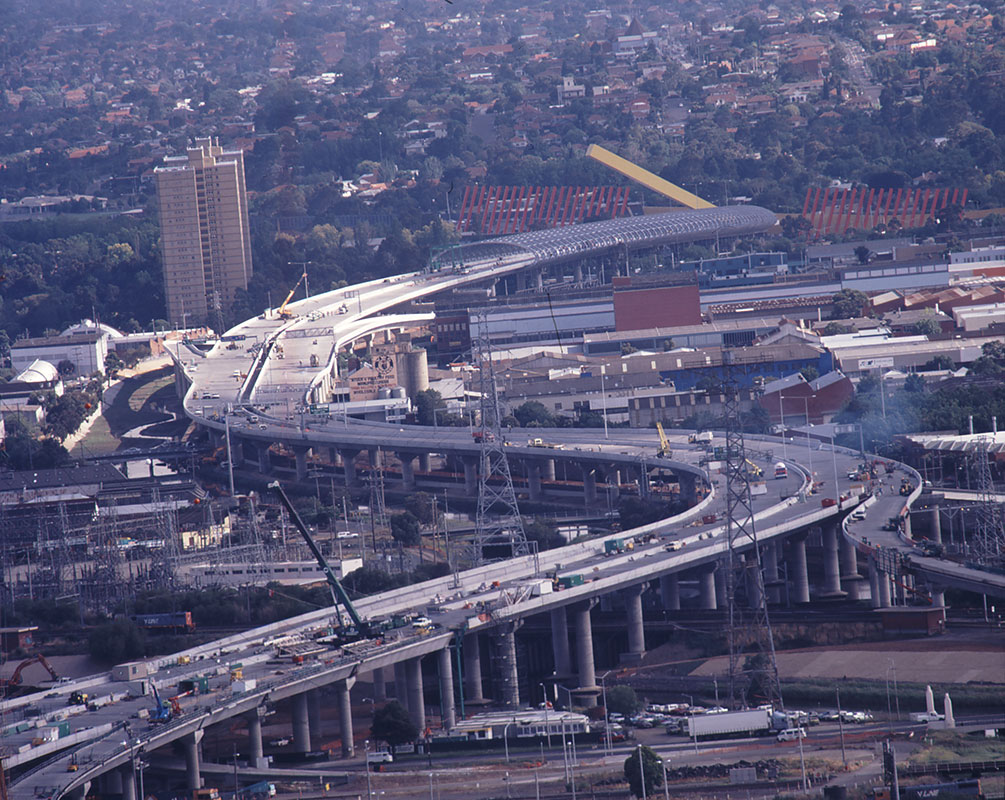
It proved to be the most challenging project ever undertaken by Transfield. Prior to the bid being lodged, the consortium had to convince politicians, bureaucrats, technocrats and financiers that it was capable of meeting a number of very significant hurdles. Most importantly, it needed to demonstrate that the estimated road use patronage and tolls, were sufficient to finance the $2 billion project. This was to be the biggest Australian BOOT project ever. At the same time the consortium brought together a large team of engineering, banking, traffic, operations, tunnelling.
Page Media:
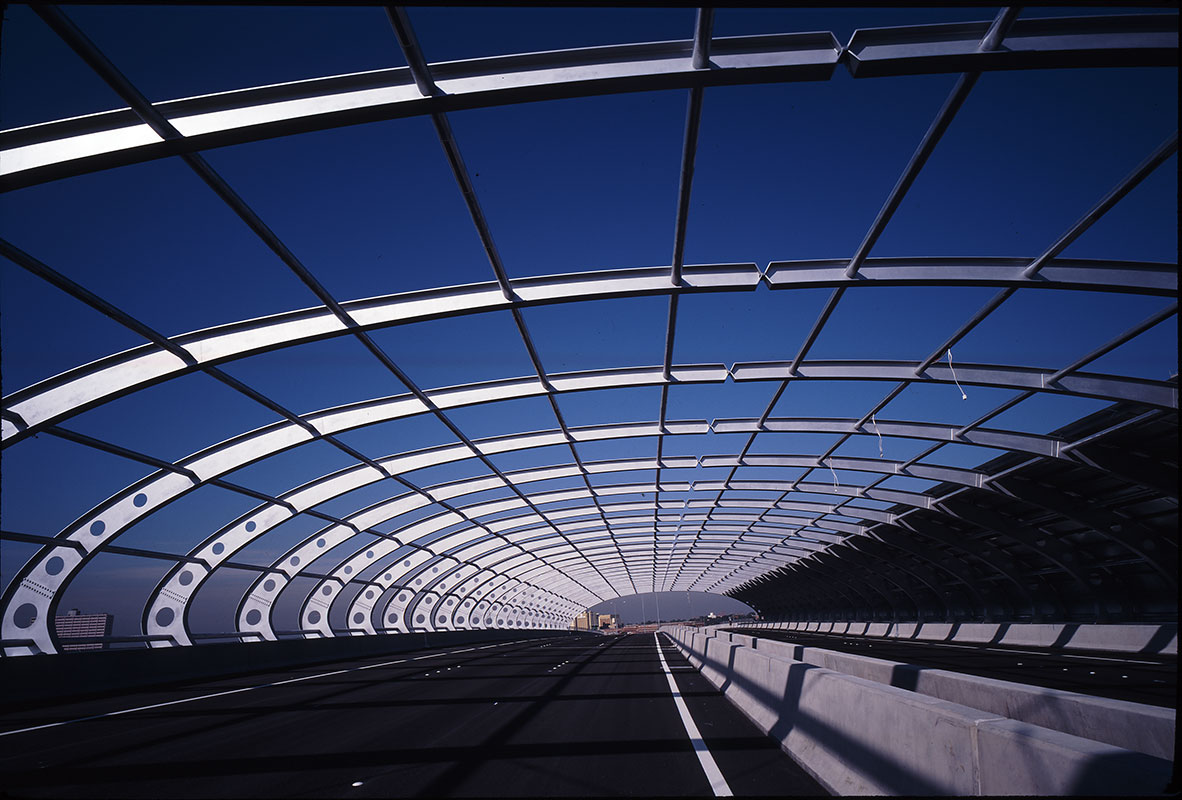
To achieve its goals, the consortium created Transurban to own and operate, Transfield-Obayashi Joint Venture to design and construct, TransLink to deliver the tolling systems and to be the maintainer. Translink was a joint venture between Transfield and Transroute from France, possibly, at the time, the world's premier electronic tolling company.
Page Media:
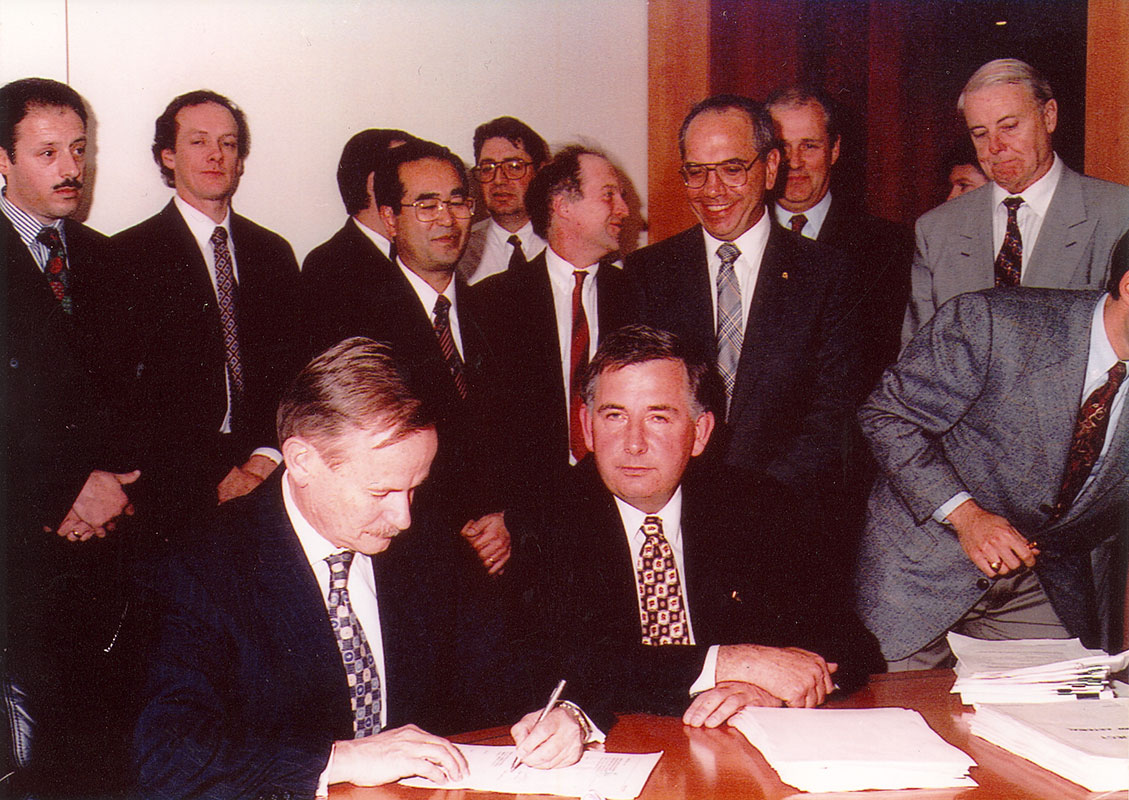
In May 1995, Transurban was selected as the preferred bidder and, on 28 July, Tony Shepherd signed the contract between the Victorian Government and Transurban. The Melbourne City Link was Australia's largest infrastructure project since the Snowy Mountains Scheme and Australia's largest private tollway. The tolling was to be the biggest ever application of highway speed electronic tolling anywhere in the world, about 600,000 transactions per day. Transfield Services continues to maintain the roadway, including the electronic tolling and associated traffic management systems.
Page Media:
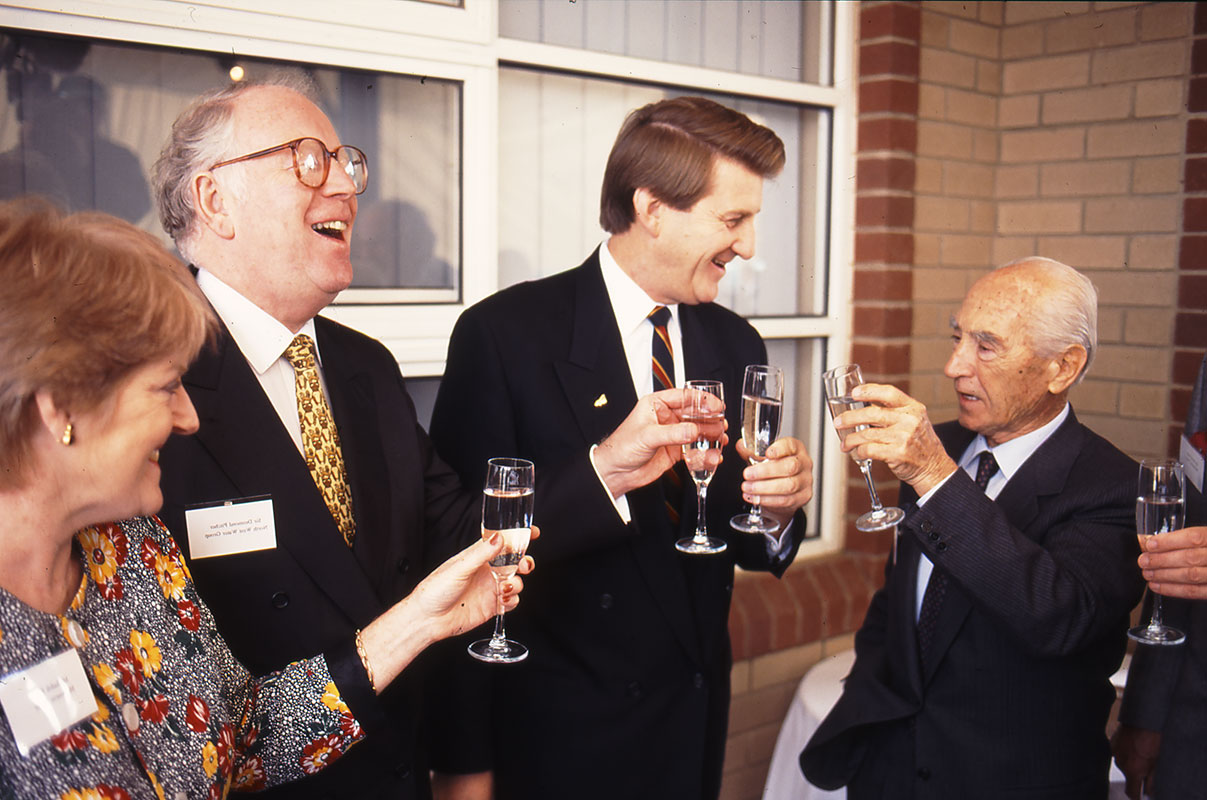
On 29 May 1996, Premier Jeff Kennett officially "broke the ground" by placing a spade into a cone of sand, and then repeatedly throwing sand into a swag of photographers! As previously had been the case for the Sydney Harbour Tunnel, from the outset City Link was also marred by controversy over both the contractual conditions signed by the Victorian Government and the perceived benefit of the new ring roads.
Page Media:
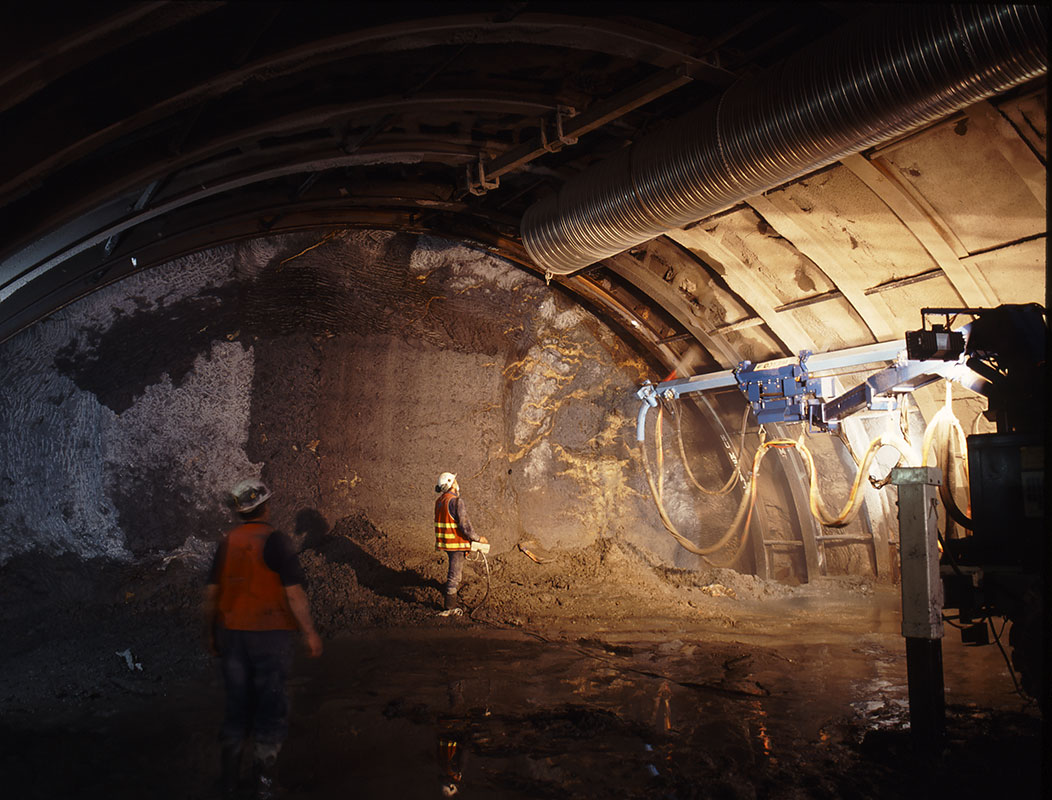
The community were yet to be convinced, and the disruption associated with construction didn't help. However, once Burnley Tunnel was opened in December 2000, the critics were soon outnumbered by thousands of happier motorists, in fact some 300,000 each day!
Page Media:
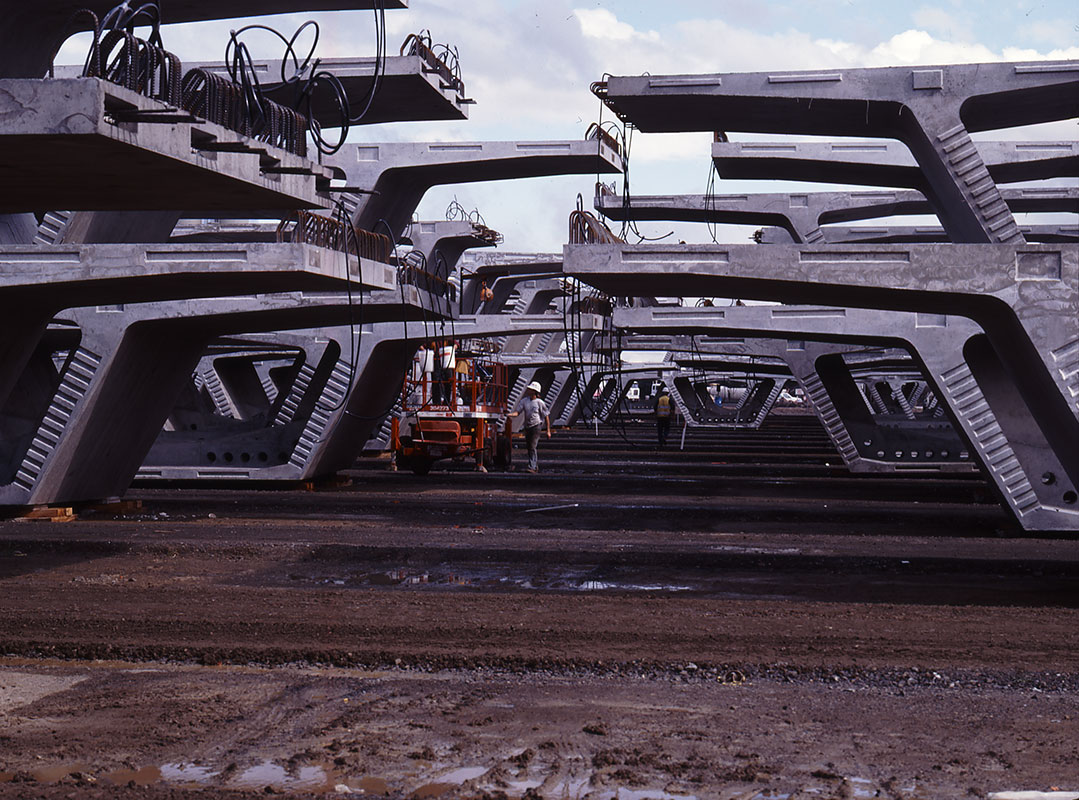
A special pre-cast yard was built on Melbourne's outskirts to manufacture segments used in the construction of the elevated road leading to the new Bolte Bridge. Tunnelling, particularly for the deep and long Burnley tunnel, was difficult and dangerous, being mostly in soft, wet and inconsistent ground conditions. Despite stringent safety standards, several accidents took place, the most serious one being the death of a construction worker in May 1997, when a small hole, at ground level, unexpectedly caved in on him.
Page Media:
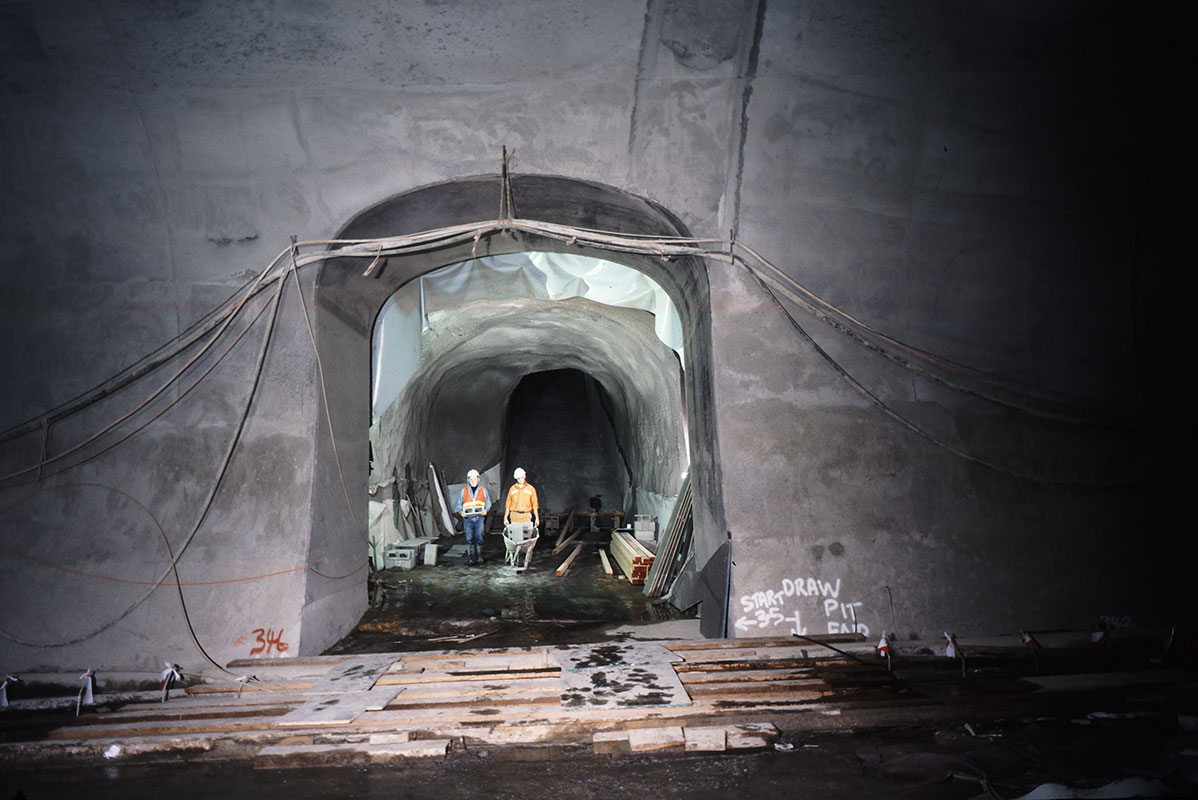
As the roadways were to be opened in July 1999, the consortium faced a virtual calamity, because the Burnley Tunnel developed serious structural defects. The floor started lifting, by almost half a metre! Hurriedly, a solution was devised to insert hundreds of rock anchors into the floor. In the meantime, liquidated damages and cost overruns wiped out any profit. The Authorities permitted the opening of the Western Link in August 1999, at no cost to motorists, whilst repairs continued on Burnley Tunnel.
Page Media:
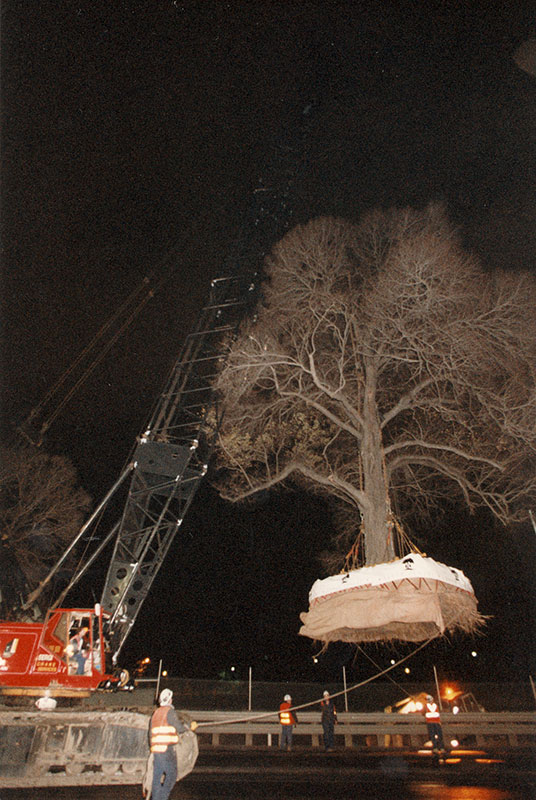
More than $1 million was spent saving Melbourne's historic elm trees that were in the path of the Domain Tunnel. Nearly 40 trees were carefully relocated to storage areas and tended for three years before being replanted close to their original position. Besides, 500,000 new plants and shrubs were added to the route of the tollway.
Page Media:
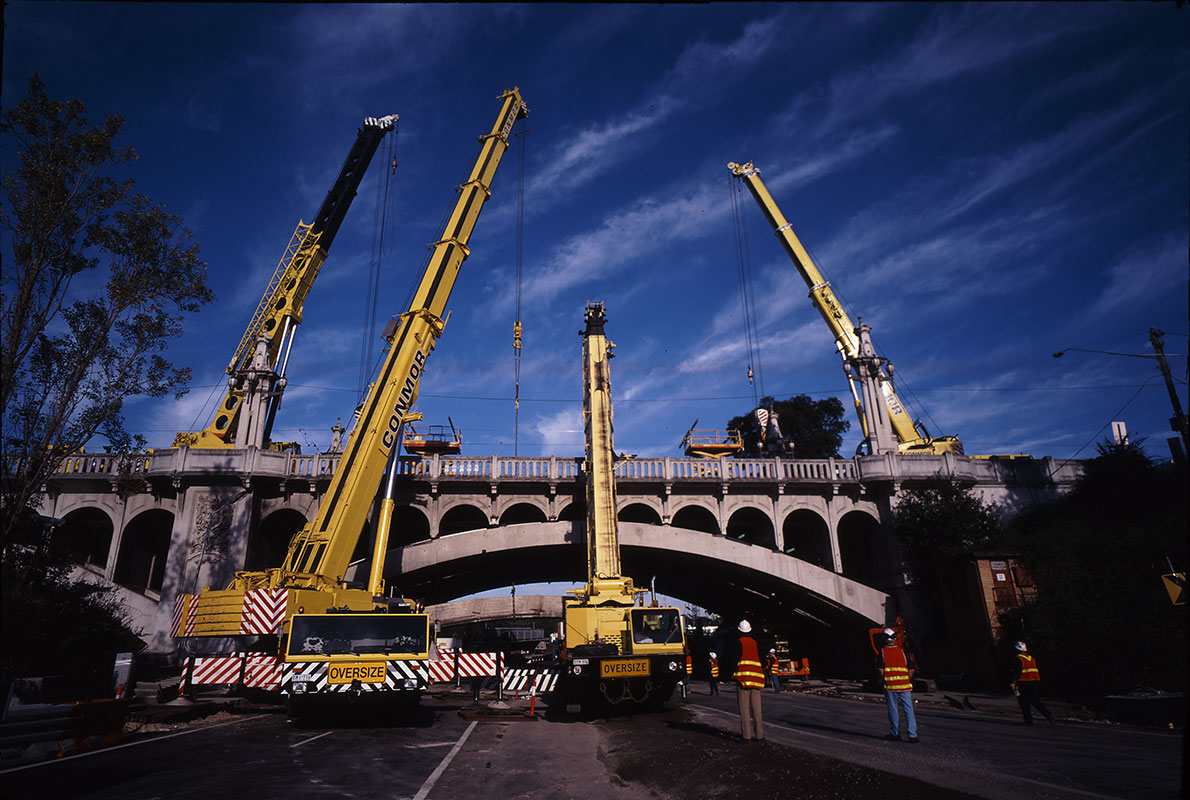
The Link dramatically improved the road network in and around Melbourne by connecting the Tullamarine Freeway, West Gate Freeway and the South Eastern Arterial via two tunnels under the Yarra River, a new 30-metre high, 490-metre long bridge, the Bolte Bridge, over the Yarra and 23 kilometres of new freeways.
Page Media:
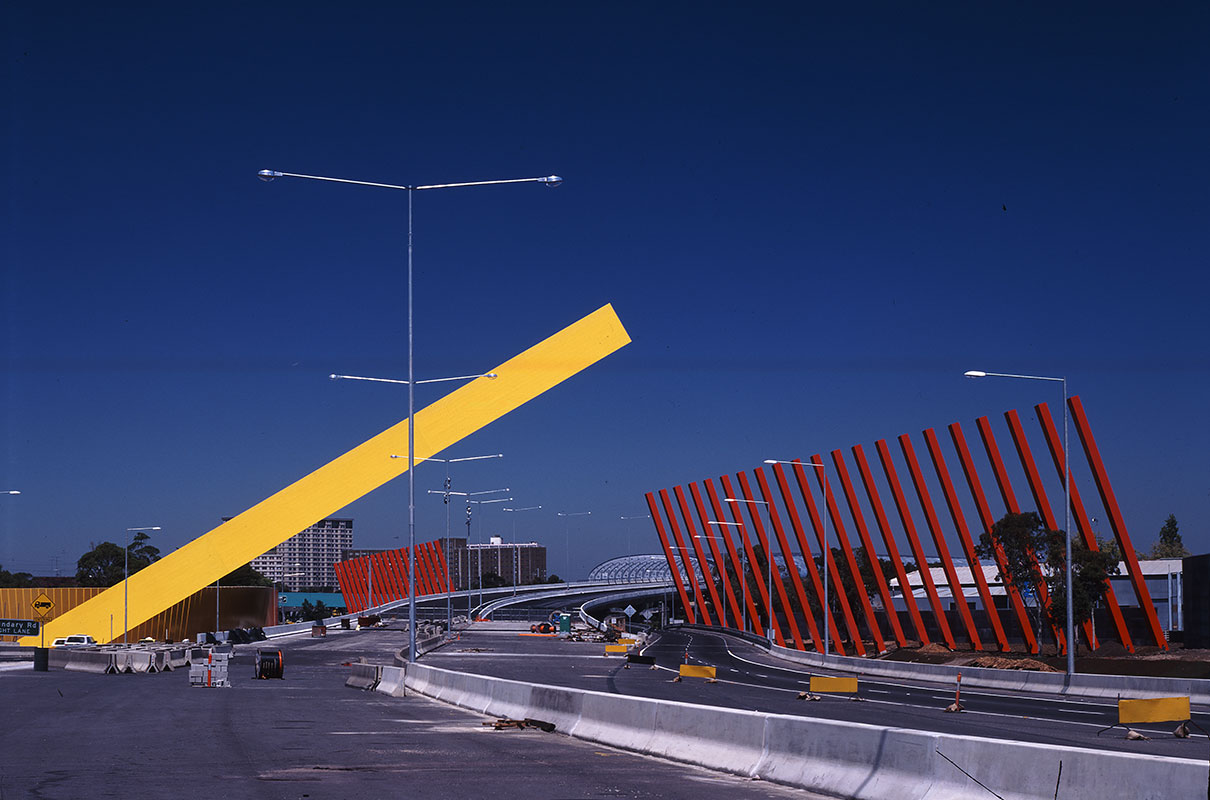
Australian architects Denton Corker Marshall (DCM) designed the Gateway, the sculptural element on the route between the city and the airport, as well as the Bolte Bridge towers and detailing. A 70-metre long inclined column of yellow painted steel is a key feature of the Gateway, which also consists of a line of inclined red columns and a curving orange sound wall. The design of the Bridge and Gateway won the prestigious Jury Award at the 1999 National Architecture Awards.
Page Media:

On winning the tender in 1995, Transfield and Obayashi were committed to deliver Melbourne City Link, despite the considerable stress the project eventually put the Consortium under. The Companies were the original sponsors of Transurban Ltd., which they listed on the Australian Stock Exchange in March 1996. Today, Transurban trades amongst the top 50 Australian companies, capitalised at over $6 billion, underscoring the original viability of its first investment. The City Link relieved once and for all Melbourne's congested downtown traffic.
Page Media:
Melbourne's City Link